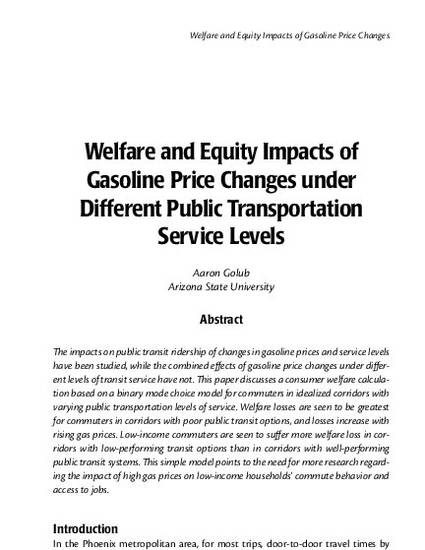
The impacts on public transit ridership of changes in gasoline prices and service levels have been studied, while the combined effects of gasoline price changes under different levels of transit service have not. This paper discusses a consumer welfare calculation based on a binary mode choice model for commuters in idealized corridors with varying public transportation levels of service. Welfare losses are seen to be greatest for commuters in corridors with poor public transit options, and losses increase with rising gas prices. Low-income commuters are seen to suffer more welfare loss in corridors with low-performing transit options than in corridors with well-performing public transit systems. This simple model points to the need for more research regarding the impact of high gas prices on low-income households’ commute behavior and access to jobs.
Available at: http://works.bepress.com/aaron-golub/24/
